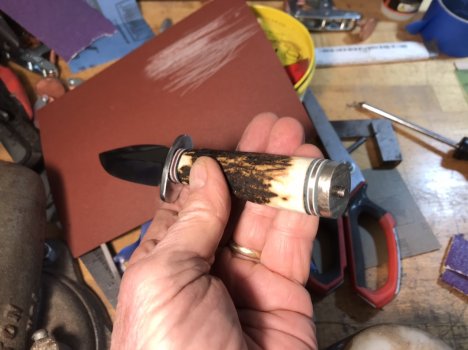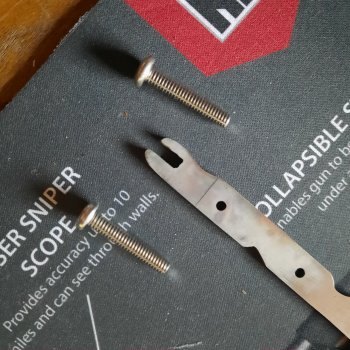CDHumiston
Well-Known Member
I'm working on a new commission build for an old friend. He wants a handmade knife similar to his trusty old Case hunting knife.
His old knife is a hidden tang which I have very little experience making, but as usual these custom orders push me to try new things and become a better maker. The knife must also have a guard which I've only done twice.
Just in case though I'm making a hidden tang version and a full tang version. Here are some pictures of Tom's old Case XX and the two blades I'm working on.
That last picture shows an original New Old Stock Case XX blade of a very similar model of Tom's knife. It's obviously the one in the middle...
I'm really hoping to get the hidden tang knife to work out!
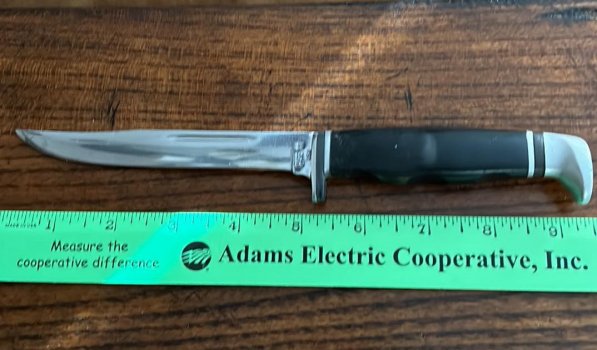
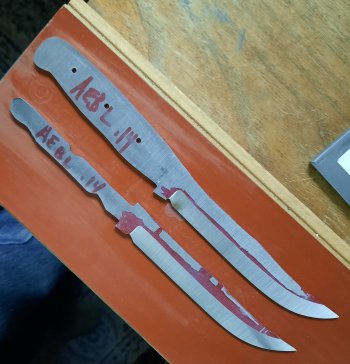

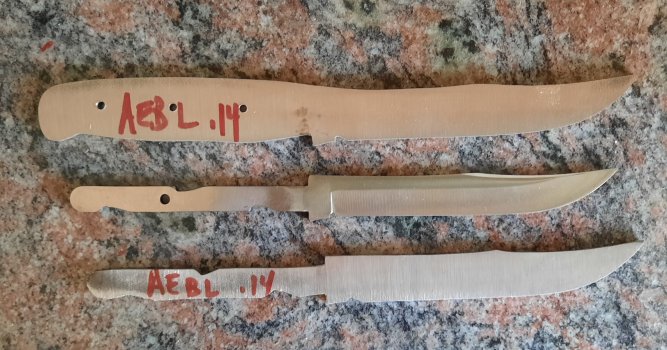
His old knife is a hidden tang which I have very little experience making, but as usual these custom orders push me to try new things and become a better maker. The knife must also have a guard which I've only done twice.
Just in case though I'm making a hidden tang version and a full tang version. Here are some pictures of Tom's old Case XX and the two blades I'm working on.
That last picture shows an original New Old Stock Case XX blade of a very similar model of Tom's knife. It's obviously the one in the middle...
I'm really hoping to get the hidden tang knife to work out!





